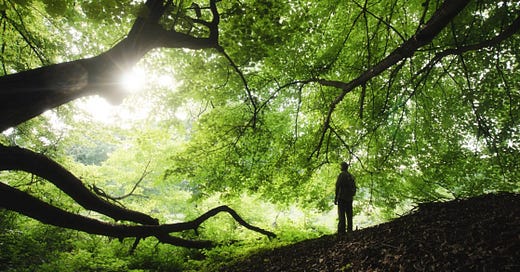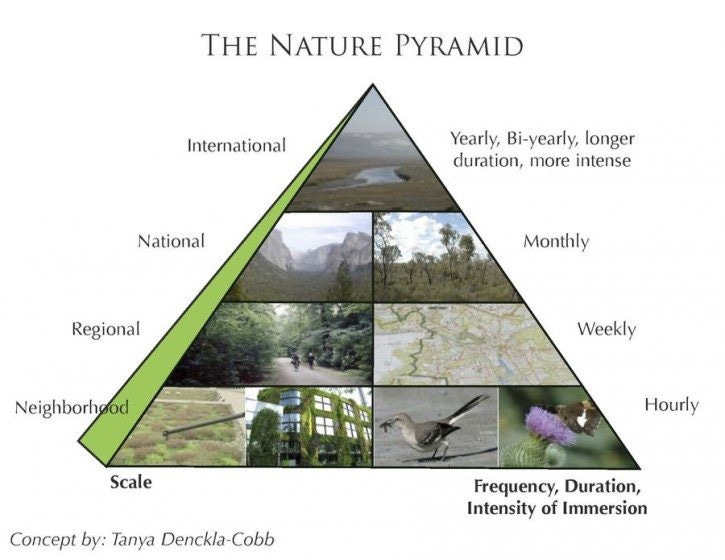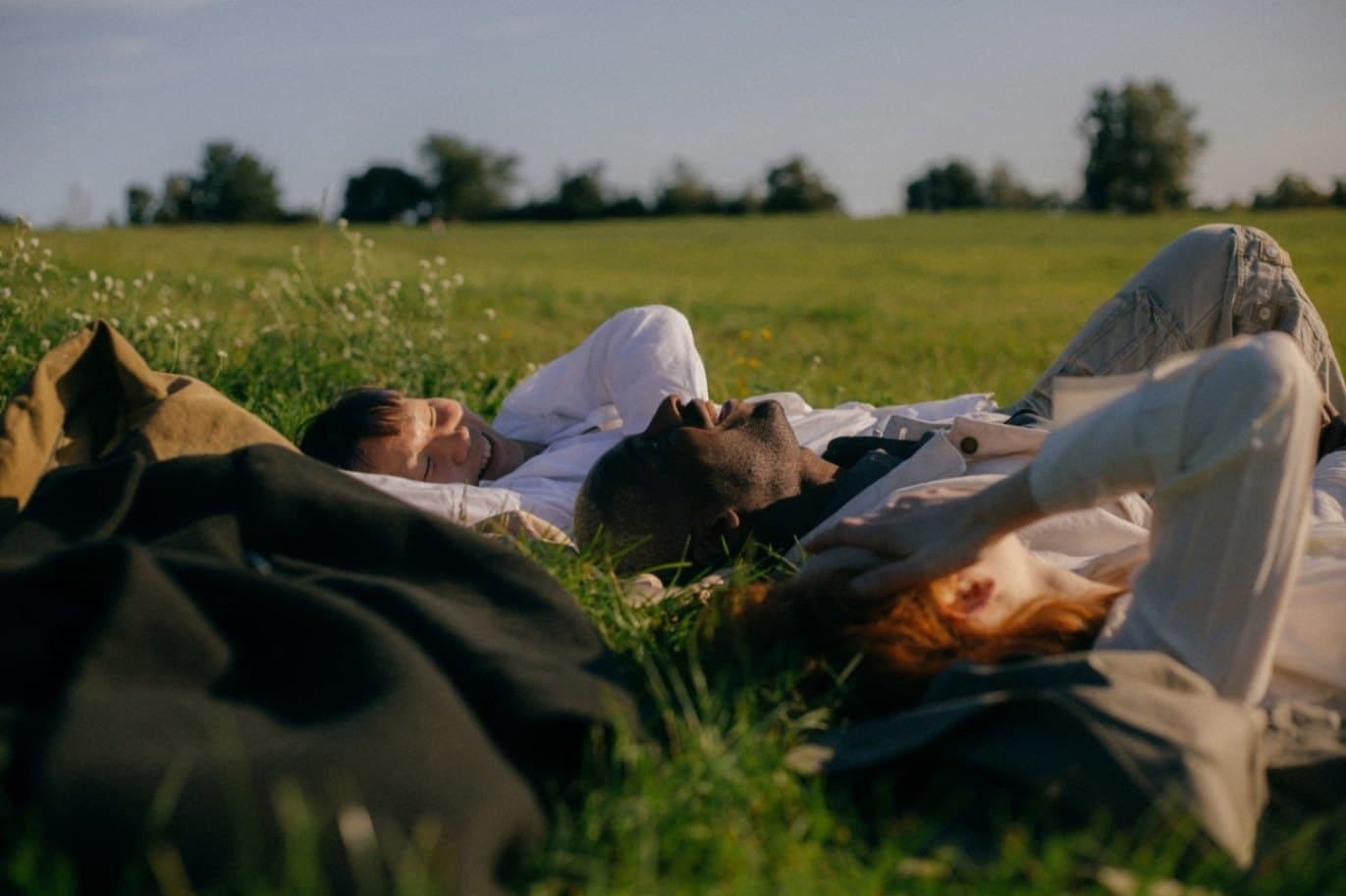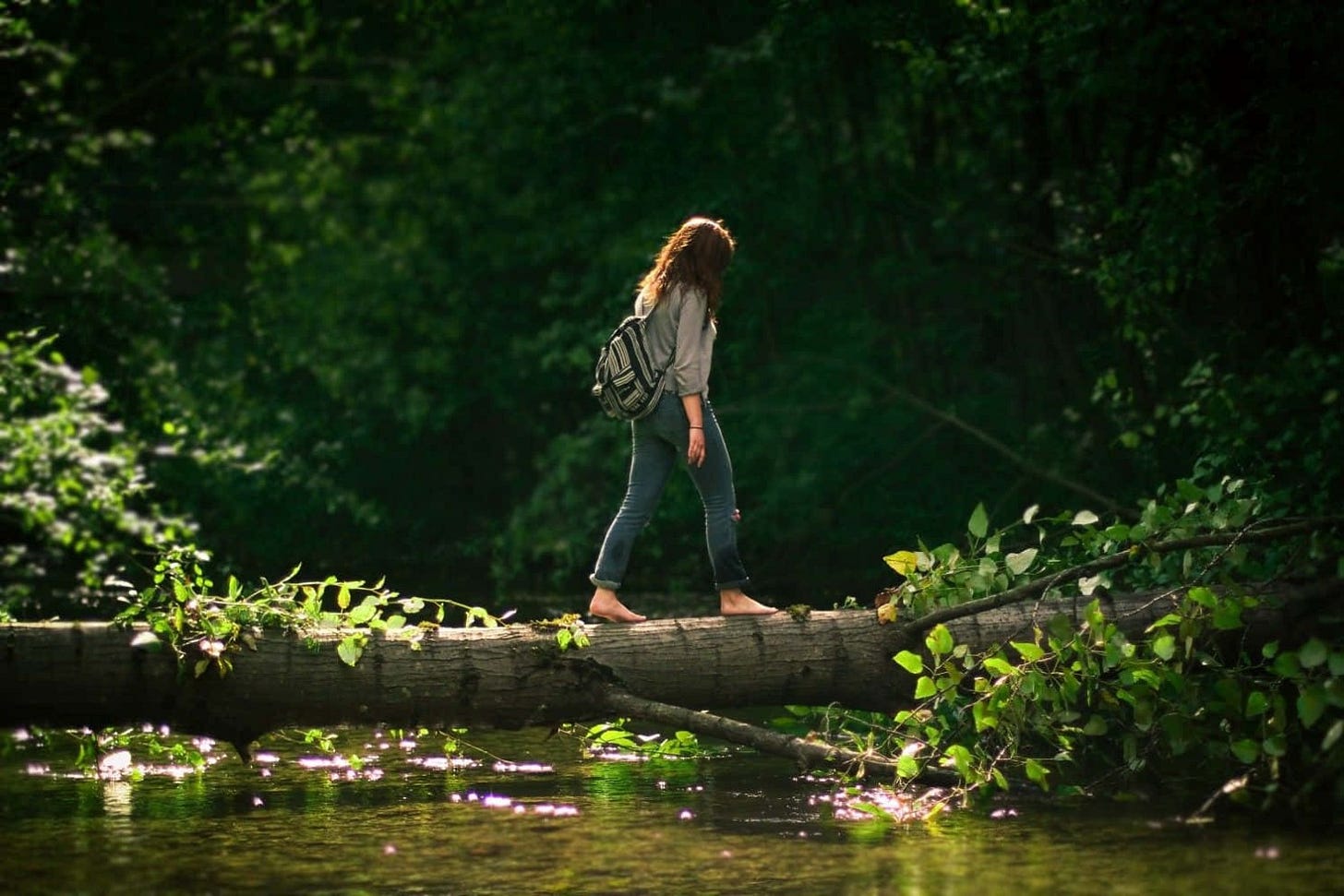The Nature Pyramid: How're you doing, nature-wise?
Just like the food pyramid, the nature pyramid can help us see - and get - more of what we need.
I believe that a huge chunk of our lovely species has lost respect for nature - and that’s not because they’re bad people, but because they’ve grown apart from nature over the past few centuries (I’d argue that last 100 years have been the worst with more and more people flowing into megacities and deserting rural lands).
I live on a supremely idyllic farm in Switzerland. In this country the lowlands are densely populated with cities and towns and villages and hamlets and farms and countless spiderweb-like roads and railway tracks connecting all of those dots. We’re lousy at making big-scale efforts (Switzerland has only one national park), but there are countless disconnected nature reserves, from forests to marshes to ponds (and to the Alps, of course), so you’re never far from getting your nature fix. Unfortunately, whether in Switzerland or elsewhere, people are not getting that nature fix often enough.
I’m convinced that respect for nature comes from being IN nature. Or, as rewilding legend Kris Tompkins of the Tompkins Conservation rightly points out:
“I am sure now that the only way you can get people to protect something is if they can fall in love with it first. And the only way I can fall in love with something is because I know it, because I’ve felt it, because I’ve walked it.”
When people get their nature fix, they are more respectful of nature, they fall in love with nature and yes, they are far more likely to want to protect nature.
I’ve only recently read about the nature pyramid (developed by Tanya Denckla Cobb and Tim Beatley) a visualization along the idea of the well-known food pyramid that came about in the seventies and has, in various iterations, attempted to show how much of what constitutes a healthy diet. There’s a great deal of controversy that comes with the food pyramid, mind you (but that’s for another time).
👉 Here’s Tim Beatley in 2012 writing about the ature pyramid in detail
By now the science is in and we know (what we've always known, really) that being out in nature has a very clear positive effect on both our physical and mental health. The above visualization shows you what a healthy level of engagement with nature might look like. If you’re lucky like me and you live surrounded by nature, then the daily, weekly and monthly levels are a given. But I definitely need/want to tackle the top of that pyramid - I’d love to join some of those rewilding trips - offered by Rewilding Europe. Fingers crossed I’ll make it happen.
Mind you - I don’t see the geographic element in the above visualization as important. Local, regional, national, international? I think you can get the same level of immersion in one’s own country. I think the importance is not about distance, but about immersion. So, if a trip across the globe is possible for you - good on you (if not so good on the climate) - but I don’t think that's key. For example, I enjoy long-distance hiking. That’s truly immersive and I can start doing it by walking out the door and then continue walking.
👉 In 2020 National Parks UK wrote about children and the nature pyramid
They write that they’re somewhere in the middle of the nature pyramid and suggest that children should immerse themselves in national parks “more often than once in a lifetime. We believe all children, at the very least, should visit a National Park during their time at primary school, enjoy a residential stay during their teenage years and have the opportunity to volunteer or undertake work experience in a National Park as they become young adults.”
In her book The Nature Fix, Florence Williams focuses on the very same thing. We all need it, we all need nature - and if we don’t know it, if we don’t see it and hear it and feel it on our skin, then how are we supposed to love and respect it? In this interview, Williams argues that it’s imperative to bring nature to the masses. “Given that more than 70 percent of the U.S population resides in urban areas, bringing nature into cities should be a top priority. And to do this, it’s critical that we work towards creating more access that’s inviting, useful and safe for people from diverse backgrounds and cultures.”
The lady’s absolutely right. As urbanization continues - and with many people in the thick of things and strapped for money, we cannot expect that the majority as either the means or the leisure to journey to somewhere where they can immerse themselves in nature. Every national park, every nature reserve, all of that’s great - but nature needs to come closer to where people are - so that everyone - literally everyone - gets their daily nature fix.
I believe that, the daily dose, that sense, that in itself, would begin to change the way we - our species - engage in this world, on this planet, WITH nature.










